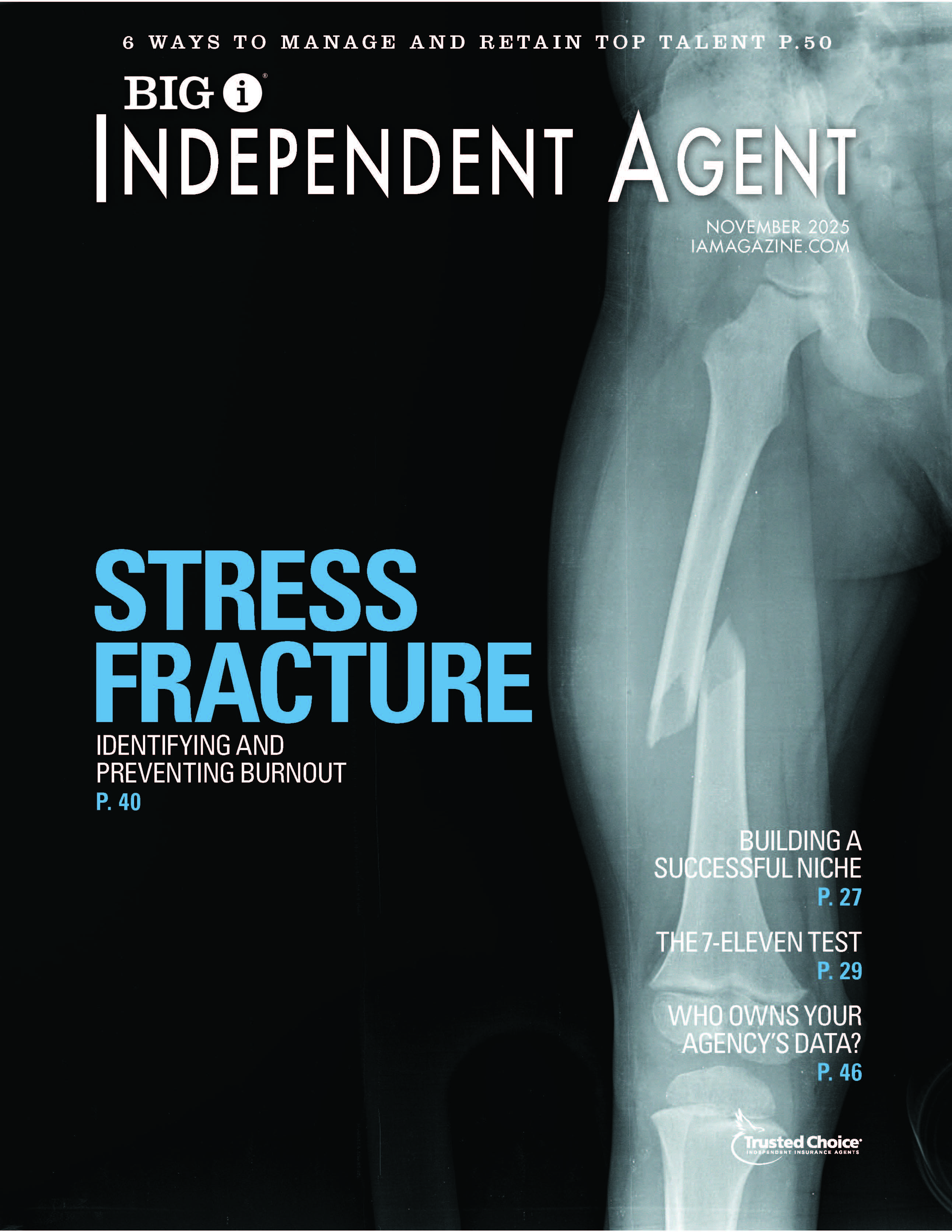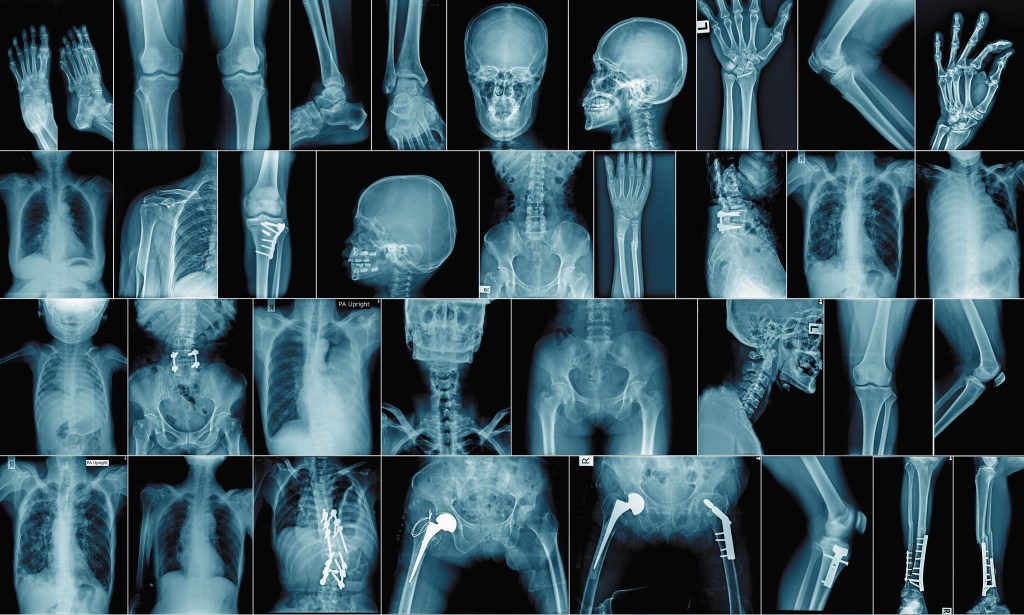New Year, New Universe
By: Banham
The independent agency system isn’t going anywhere.
There are many conclusions to draw from the new Agency Universe study, but if there is one overriding theme, it is that independent insurance agencies and their carriers remain an integral component of the world of personal and business risk transfer.
This vital role is evident in the aftermath of them any devastating hurricanes that tore through the Southeastern United States in recent years, from Hurricane Katrina to Hurricane Ike. While captive insurers with employed sales forces pulled up stakes post-disaster, carriers leveraging the independent agency distribution system sensed a growing market opportunity and quickly filled the void. Hence, the rise in the number of new agencies incorporated in the South Atlantic and West South Central regions of the country, the study notes.
This is just one of the many eye-opening insights of the 146-page biennial Agency Universe study, considered the most comprehensive look at the independent agency system. Since the first study in 1983, carriers, agents and brokers have eagerly awaited its many-faceted findings. Maynard Robison, director of insurance at market research firm TRC, says the study “is certainly the most complicated survey we do. It is a very long and complicated Web-based undertaking, in which we e-mail invitations to agency principals to participate.” Robison notes that 1,874 agency responses were included in this year’s analysis, which is roughly the same as the response rate in previous studies. “We had a great group of expert market researchers on the Agency Universe committee this year that were extremely helpful in drafting questions and applying their knowledge and expertise to analyzing the results,” he adds.
Total Agency Ranks Stabilize
Business is never static and neither is the independent insurance agency system. “We’ve seen a lot of things change over the years, but the independent agency system has adapted and persevered,” says Madelyn Flannagan, Big “I” vice president of education and research. “We always learn to do more with less and continue to be successful. It is still seen as a viable business and profession by many.”
For the first time since 2000, the trend toward fewer, larger agencies has been interrupted; at the same time the number of startup agencies is higher. Altogether, the total number of independent agencies countrywide stayed flat at 37,500, the same number in the 2006 study. This is the first time, however, since 1996 (when the total number of independent agencies was 44,000) that the industry’s ranks have not slimmed. “We thought perhaps this was an anomaly in our research,” Flannagan says. “As we thought more deeply about the findings, we’re postulating that a lot of agency principals that sold their agencies back when folks were paying big bucks for them have reached the end of their non-competes (in their agreements with buyers) and are back in the business. What’s good about this is that people who got out still find it a good business to be in.”
The overall age of agency principals, which did not go down, and the number of banks selling insurance, which fell, supports this theory. Flannagan cites her own career as an example. She used to work for a large independent agency in Fairfax, Va., that was sold to First Union Bank. The bank later became SunTrust Bank, which subsequently discontinued the insurance offering. “There are lots of other agencies that sold to someone that is no longer a viable entity,” she says. “With the entity gone, the former agency principal might sense a compelling opportunity to open another agency.”
Introducing New, Small Agencies into the Fold
Another major finding in the 2008 study is that there are more new agencies out there than previously believed. Eleven percent of agencies participating in the study were founded in the last four years—most of them clustered in the South Atlantic and West South Central regions of the U.S. This concentration, the study suggests, indicates that new independent agencies may be filling a void created by dedicated agency companies reducing their presence in these regions.
This finding ties into another—an increase in the number of smaller agencies (firms with less than $150,000 in insurance revenue). This group increased in the past two years—up from 12 % in 2006 to17% in 2008—although the percentage of all other size agencies decreased slightly. With all the mergers, acquisitions and subsequent consolidations of independent insurance agencies in the past five years, the finding took the committee members by surprise.
“We thought it might be a sampling error, but then we talked to some of the carriers and other people and they confirmed the data,” Robinson says. “There seems to be a relationship between the decreasing number of acquisitions, especially the decline in acquisitions by very large agencies and by banks, and the rise in startups. We believe these organizations have already bought the desirable books of business out there, or maybe the current economic climate is dissuading investment. We also think the non-compete agreements, which tend to last four to five years, are playing a role since the big M&A activity was four to five years ago. And we believe the market void in hurricane-affected regions also is a factor.”
He adds that the latter subject “is of great business and social interest. It shows that we have a distribution system that will jump in the breach when everything else fails, hunting and pecking for coverage in Florida and Louisiana when few others want to touch it.”
The study’s finding that overall agency satisfaction with personal lines and small commercial lines carriers has increased maybe a reason for the seeming halt in the dwindling number of agencies. Interestingly, the survey indicates that the increased carrier satisfaction by agents is based, in part, on the ease in which the insurers assist agency CSRs to write business.
Challenges Remain
The 2008 report cites other findings, some a bit sobering. For example, many agencies are reporting revenue declines since 2006. While the majority of agencies are growing, those in the “medium small” and “medium” size categories ($150,000 to$500,000 and $500,000 to $1.25 million, respectively) are coping with decreasing revenue. Flannagan chalks up the declines to the soft market. Obviously, as premiums come down, commission revenue follows suit. Why the declines seem to affect medium small to medium-size agencies remains open to question.
Many agencies are addressing falling revenue by downsizing their staffs. On average, agencies employed 11.2 fulltime equivalent employees in 2006; this year they employed 9.0, the study notes. Agencies either are compelled by the soft market to do more with less, or as Robison believes “are effectively tapping technology to do things that heretofore were handled by people.”
Ron Berg, senior research specialist in e-business at Met Life Auto & Home, conducts research helping the carrier determine its strategic direction insofar as its technology interfaces with agents and consumers. Several findings in the survey concerning agency use of technology surprised Berg, such as the scant percentage of financial resources set aside for Internet advertising and marketing. While 24%of marketing dollars is spent on average by independent agencies on Yellow Page advertising, only 2% is directed toward e-marketing. “This is not enough in my view,” says Berg. “We know now that more than 60% of potential customers for auto insurance alone go online first to research purchasing options. To not have a more dedicated presence advertising-wise on the Internet is misguided, not to take a swipe at the Yellow Pages, which is still effective, but even it, too, has gone online.”
Nevertheless, Berg says the survey also demonstrates a greater willingness by agency principals to invest more resources in technology, despite the expense. While the overall cost of technology is ranked by far the highest in terms of agency expenditures, agency principals “still move forward with the technology whether it is viewed as prohibitively expensive or not,” Berg maintains. “They see the payoff in terms of yielding greater efficiency down the line.”
The survey suggests that both agency principals and carriers need to invest more in technology that makes communicating with businesses and consumers easier. “People today are doing things on their Blackberries and iPhones that didn’t exist last time the survey was conducted, and we as an industry need to realize our job is to deliver services to the end user in ways they want it,” Berg says. “Like Wayne Gretzky once said about his success, he simply ‘skated to where the puck was.’”
Banham (Russ@RussBanham.com) is an IA senior contributing writer.
Under the Hood of the Study
TRC assists the Agency Universe study research committee in wording the questions to improve analytical capabilities, collects the responses, cleans up the data and then prepares the final report.
Although surveys are an inexact science—the margin error for the study at a 95% confidence level is plus or minus2.3%—much effort goes into ensuring that the report’s findings are as close to the mark as possible. “We still have some areas where the results are fuzzy, such as the growing interest in business partnerships like networks, clusters and franchises,” Robison explains. “The industry has yet to speak the same language on these things, so we didn’t get as clear a picture as we would have liked.”
The study offers insight to agency principals and managers on the operations, business strategies and tactics of their peers. Insurance companies accessing the study use it to gauge subtle changes in independent agency distribution of their products and services, as well as their technology practices, the strategic directions in which agency principals are moving and their concerns.
Members representing insurance carriers on the research committee say the study findings assist senior managers in their decision-making. “The report is highly detailed and there is a chart for virtually every question in the survey,” explains Sean Anderson, assistant director of distribution strategy and management at The Hartford. “The information is one-dimensional, very broad, and covers a lot of ground, so you have to dig down deeply to draw hypotheses. We will cross tab two different elements, for instance, to get at more information. Frankly, there is nothing else like it anywhere. This is highly valuable and fresh information, and we make a lot of use out of it.”
—R.B.
Tapping the Major Trends
The 2008 Agency Universe study revealed a host of industry trends, including:
• A long-term trend interrupted: The long-term trend toward fewer, larger agencies has been interrupted. Compared to 2006, the number of agencies has remained the same. This stabilization reflects a decrease in acquisitions and an increase in the number of start-up agencies.
• Growth in the number of small agencies: The percentage of small agencies (less than $150,000 in insurance revenue) grew between2006 and 2008, while the percentage of all other size agencies decreased slightly.
• Doing more with less: Agency operations are becoming measurably more efficient. Apparently, agencies are able to do more work with fewer employees. Increased usage of technology likely contributes to more efficient processes.
• Satisfaction with carriers continues to improve: Satisfaction with personal lines and small commercial lines carriers is up since 2006. The area considered to be the most improved across carriers is that “they make it easy for CSR’s to write business.”
• Concern about controlling expenses: While “maintaining experienced staff,” finding carriers who will maintain their commitment to agent’s market and to providing the coverage agency’s customers need “still remain major concerns for agency future, “controlling expenses and reinvesting in agency” has risen as a concern since 2006, an expected response in tough economic times.
—R.B.










